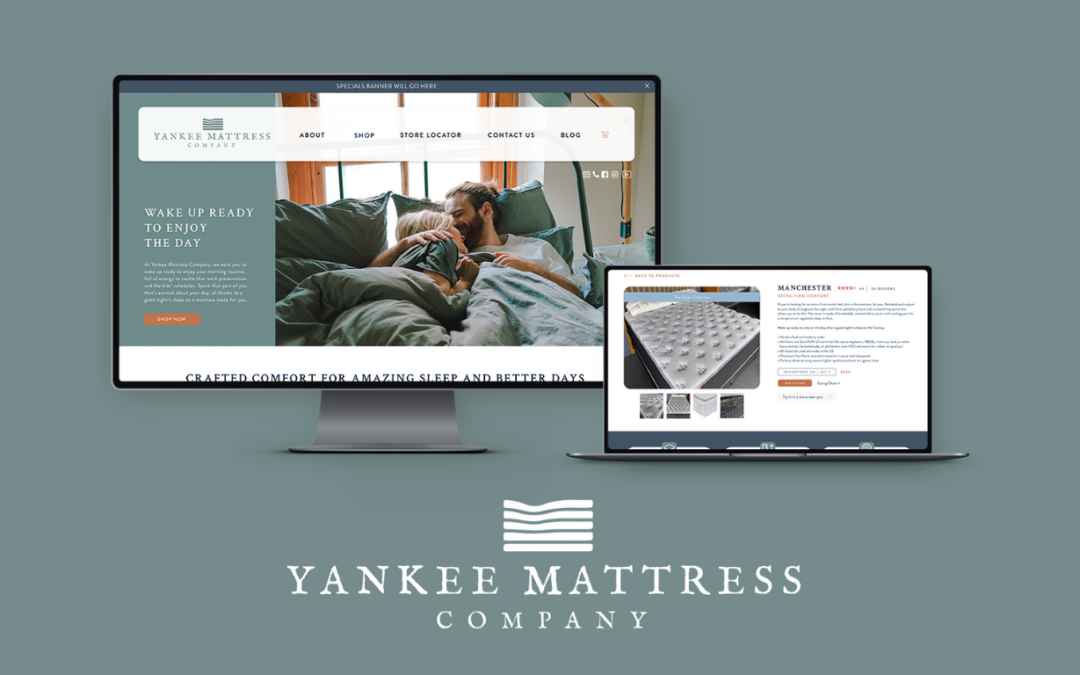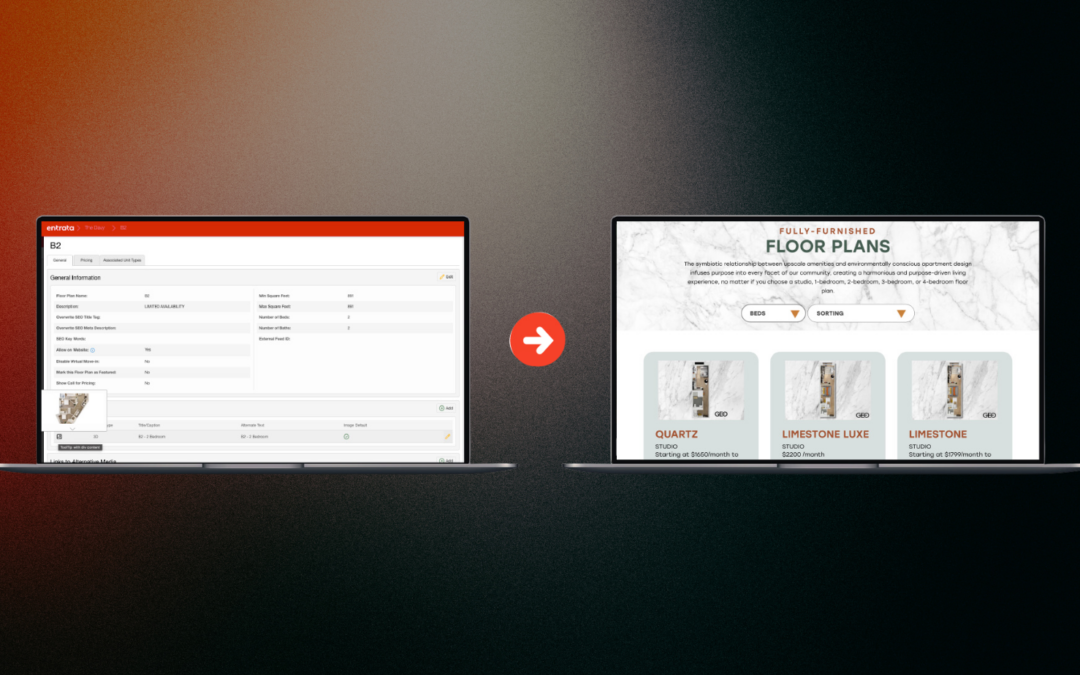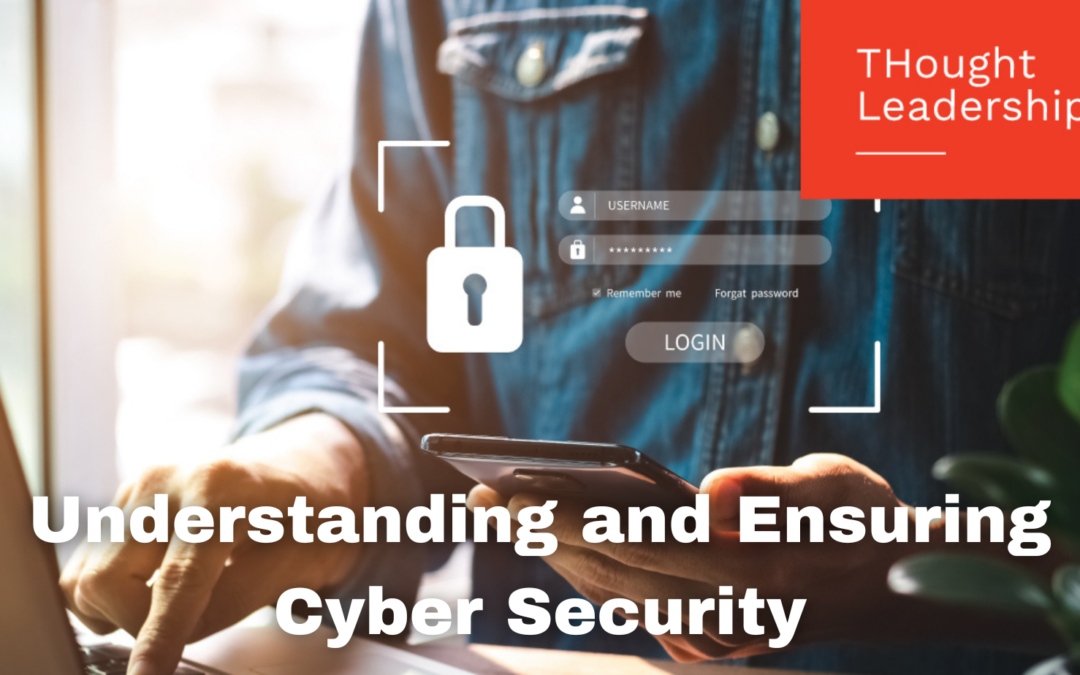
by threshold | Jun 6, 2024 | Creative, Design, Digital Marketing, General, Marketing
Yankee Mattress Company was looking for a revamp to its branding along with a new e-commerce website. They needed a more focused approach to their target market, with stronger messaging and values that elevated their branding to the same level as their high-quality mattresses.
Threshold wanted to position Yankee Mattress as more than a retail store, but an employee-owned company that’s invested in their customer’s quality of life.
our approach.
new brand positioning & naming.
Following extensive market and customer research, Threshold created two brand concepts for the client to choose from, both with a core purpose, messaging, tagline, brand voice, and visuals. Each concept brought the brand to a more modern place, differentiating it from competitors by highlighting the craftsmanship that goes into their mattresses.
a new brand look & feel.
The brand’s new messaging needed a new logo, brand guidelines, stationary, photography, apparel design, and more. We chose to design this brand with a logo font that spoke to handmade craftsmanship and a subtle mattress icon that would become a recognizable brand statement.
a killer e-commerce website.
Yankee Mattress’ previous website didn’t allow for a streamlined online ordering experience. Our website design included easily navigable shopping categories as well as detailed shop pages. Each mattress product page included custom graphic designs that detailed each section of the mattress materials, making it easy for customers to browse and select the mattress best suited for them.
We designed this website to mimic the in-store experience customers have, providing them with clear information so they could make informed decisions.
we love results.
The final brand not only connects better with the target audience, but it feels timeless and elevated. Each aspect of the brand ties in seamlessly with the next, inspiring the company’s employee-owners and ensuring the quality of the mattresses is felt within the quality of the branding.
One Year Post Website Launch (April 2023-March 2024):
- 446 New Users
- 7% Increase in Engagement Rate
- A 7% Reduction in Bounce Rate
before you go.
Yankee Mattress Company can now confidently say they’re crafting comfort for amazing sleep and better days. See the case study for a full look at the transformation our THeam created for them – and what we can do for you, next.
Let’s propel you forward too! Your place for your every marketing need, with us you can go a la carte or take all the carts. Talk to a Marketing Specialist today.

by threshold | Apr 10, 2024 | General
 Michael Pratt
Michael Pratt
In the ever-evolving landscape of digital marketing, businesses are increasingly recognizing the profound impact of sustainability on their online success. Beyond mere aesthetics and functionality, sustainable web design stands as a beacon of eco-conscious innovation, promising not only higher site traffic and conversions but also a brighter, greener future. Let’s explore how prioritizing sustainability in web design can catalyze remarkable growth for businesses while championing environmental stewardship.
elevating user experience with sustainable practices.
Sustainability isn’t just about reducing carbon footprints; it’s about enhancing every aspect of the user journey. By embracing minimalist layouts, optimizing code for efficiency, and prioritizing renewable resources, sustainable web design fosters an immersive user experience that resonates deeply with eco-conscious consumers. When visitors encounter a website that reflects their values of sustainability, they’re not just browsing – they’re engaging with a brand that speaks their language.
climbing the ranks with eco-friendly optimization.
Search engines have become gatekeepers of the digital realm, and sustainability is increasingly becoming a key criterion for ranking. Websites that load quickly, adapt seamlessly across devices, and prioritize energy-efficient hosting solutions are rewarded with higher visibility in search engine results. Sustainable web design isn’t just about pleasing algorithms; it’s about forging a symbiotic relationship with the environment while ascending the ranks of digital prominence.
empowering mobile users through green innovation.
In a world where smartphones reign supreme, sustainable web design ensures that no user is left behind. By crafting mobile-responsive experiences that conserve resources and minimize energy consumption, businesses can empower users to engage with their brands anytime, anywhere. Sustainable web design isn’t just about adapting to mobile devices; it’s about empowering a mobile generation to make conscious choices that resonate with the planet.
reducing bounce rates with sustainable speed.
Every wasted second is a missed opportunity in the digital realm. Sustainable web design prioritizes speed, efficiency, and optimization to minimize bounce rates and maximize conversions. By streamlining navigation, compressing images, and leveraging caching techniques, businesses can create websites that load in the blink of an eye, captivating visitors and inspiring them to explore further.
cultivating a reputation rooted in sustainability.
In a world where brands are under constant scrutiny, sustainability isn’t just a buzzword – it’s a badge of honor. By embracing sustainable web design, businesses signal their commitment to environmental stewardship, earning the trust and loyalty of eco-conscious consumers. A website that embodies sustainability isn’t just a digital storefront; it’s a testament to a brand’s values and a beacon of inspiration for a greener tomorrow.
to wrap things up.
In the quest for digital dominance, sustainability isn’t just an afterthought – it’s the cornerstone of long-term success. By embracing eco-conscious web design practices, businesses can drive higher site traffic, boost conversions, and forge deeper connections with consumers who share their commitment to the planet. In the digital frontier of tomorrow, sustainability isn’t just an option – it’s the path to prosperity and progress.
before you go.
For more tips and information about marketing your everything, take a look at the rest of our blogs, right here on our website!
You can also subscribe to our email newsletter (it’s got some great stuff), and follow us on Instagram, Facebook, or LinkedIn!
about the author.
Michael is the WordPress Designer and Developer here at Threshold.
As a seasoned UI/UX & Web Designer based in Chicago, Michael brings over six years of experience to Threshold’s creative team, creating top-notch web designs, applications, and user-friendly interfaces with marketing at the forefront.
His love for pushing boundaries and collaborating with others on new projects is matched only by his commitment to delivering outstanding work. He always takes a holistic approach to design, expertly weaving traditional techniques with the latest advancements to bring exceptional results to life.
When he’s not killing the creative game, here are some fun facts about how Michael enjoys his free time:
- I recently lived on the West Coast for 3 years and got to hike some of the most incredible mountains! Mount Rainier and Mount St. Helens to name a few.
- I studied herbalism, ayurveda, and alternative healing. Paired with basic nutrition knowledge, I’ve been able to help friends and family live a better quality of life.
- I did an internship as a videographer with Creature Skateboards and got to meet several professional skateboarders, filming for promos and events.
- I have family located in Athens, Greece and it is one of my favorite places to visit!
- I recently started learning Judo martial arts and it is an exciting endeavor along with my many other fitness goals!

by threshold | Apr 4, 2024 | Creative, Design, Digital Marketing, General, Marketing, Tech/Web
PeakMade Real Estate came to us needing a platform that allowed for a more streamlined approach to websites across their portfolio and understood that the user journey is different across their various markets.
So we did what we do best, implementing website templates optimized for Peak’s audiences that have significantly reduced website development time and include a custom Entrata integration that converts better than any leading property management software on the market.
when we say best, we mean it.
We wanted to not only simplify website development but also provide PeakMade’s portfolio with a marketing tool that amplified lead generation. Each template design was to be innovative, with thoughtful movement of content to engage the viewer while not overwhelming them.
Our adaptable designs show an immediate improvement in conversion rates in the PeakMade portfolio, with lower costs to acquire leads when comparing the performance of their pay-per-click campaigns year-over-year from pre-templated Threshold websites to post.
Claremont Collegiate Apartments in Claremont, CA. saw:
- A 213% increase in conversion rate
- A 65% decrease in cost per conversion
University Gateway in Los Angeles, CA. saw:
- A 1,607% increase in conversion rate
- An 83% decrease in cost per conversion
Impressed? See more for yourself.
a custom integration? you got it.
Up until now, Entrata’s API allowed only floor plan pricing to be pulled into websites. Threshold built a custom integration for Entrata that retrieves several data points such as property floor plan details, availability, pricing, specials, and general property promotions, leveraging automation and increasing website accuracy and sustainability.
Our custom PeakMade templated designs and integration go far beyond the current property website capabilities, allowing property managers to:
- Set a custom pricing label option for floor plans with the ability to customize individual floor plan specials and floor plan name options
- Introduce a rent pricing override option for quick and easy discounted pricing updates when needed
- Create specials and offers that automatically remove themselves from the website when they expire
What does this mean for the property management teams?
- Information refreshes automatically
- No more spending precious hours updating leasing information or submitting requests through Threshold
- User-friendly back-end access to make certain edits on their own, without having to wait the standard 24-72 hour agency request turnaround time
- Focus on leasing and know that the property’s website is accurate and up-to-date
we love results.
How fast do you need a website? Because Threshold and PeakMade launched several of these custom website templates in only 26 business days. But the results don’t stop there.
When switching their property websites from Entrata templated designs to Threshold’s customized solution, PeakMade saw some dramatic improvements.
Taking a sample of 10 property websites from 2022-2023, the PeakMade team saw the following changes:
- Average time on a website increased by 33 seconds across all sites
- An engagement rate increase of 7.74%
- A goal conversion rate increase of 77.61%
before you go.
The 411? Using the Entrata designs and limited plugins was costing PeakMade properties conversions. Their new Threshold website templates look better than the previous property websites and provide a much-improved user experience that’s consistently resulting in better website engagement and higher lease numbers.
Let’s propel you forward. Your place for your every marketing need, with us you can go a la carte or take all the carts. Talk to a Marketing Specialist today.

by threshold | Sep 14, 2023 | Digital Marketing, General, Marketing, Tech/Web, Thought Leadership
 Michael Pratt
Michael Pratt
How do you stand out in a sea of competition? By guiding your audience through a killer experience.
Effective UI/UX design is increasingly recognized as a cornerstone of successful digital marketing endeavors. And within the real estate industry, where visual appeal and user engagement are paramount, crafting immersive digital experiences is crucial.
We’re sharing the secret sauce to engaging your audience below, so don’t click away just yet!
first impressions. they’re kind of a big deal.
UI, the visual layout and aesthetics, and UX, the overall user experience, profoundly impact initial impressions.
In real estate marketing, where potential residents will turn away if properties aren’t presented in the best light, a well-designed and intuitive website fosters trust and encourages visitors to go down a rabbit hole of site exploring.
make every visitor a navigator pro.
In real estate marketing, streamlined navigation is, well, kind of essential. Intuitive UI/UX design ensures potential buyers can effortlessly browse listings, view property details, and access contact information.
A seamless navigation experience enhances user satisfaction and encourages conversion. Cha-ching!
tap into those emotions.
Effective UI/UX evokes emotional connections. High-quality imagery, immersive virtual tours, and engaging property descriptions amplify the emotional resonance of a property. What does this do? Lots.
Emotional engagement strengthens branding and increases the likelihood of prospective buyers reaching out.
not local? not a problem.
Navigating a real estate website should mirror the ease of visiting a property in person. Effective UI/UX ensures intuitive property categorization, filtering, and detailed property information presentation.
So even if your prospects aren’t local to the property location, this seamless exploration process enhances their satisfaction and encourages extended engagement.
get people inquiring about you.
UI/UX design influences users’ interaction with contact forms, chatbots, and other communication channels. Streamlined interfaces facilitate inquiries and foster trust, ultimately translating into increased lead generation.
to wrap it all up.
The potency of UI/UX design in real estate marketing cannot be underestimated. As online interactions increasingly shape buyers’ decisions, a strategic focus on immersive, user-centric experiences is paramount.
Don’t be discouraged! Threshold is an expert in this domain, employing innovative UI/UX strategies that truly transform real estate marketing.
By cultivating emotional engagement, streamlining interactions, and delivering personalized experiences, we underscore the potential of UI/UX to redefine success in the dynamic landscape of real estate marketing.

by threshold | Feb 17, 2023 | General
 Alex Pullen
Alex Pullen
What is Cyber Security?
As more companies rely on computers, the internet, and cloud-based technology for everyday business services, more and more threats to these systems emerge. Cyber security is the body of policies, processes, and technologies designed to protect networks, devices, programs, and your data from attack, damage, or unauthorized access.
Why is Cyber Security Important?
Security may not seem that important at first glance, but depending on the industry you are in, it may have major consequences if your network or systems are breached. Generally, the government, military, corporate, financial, and medical organizations hold data that malicious actors would like for themselves, or to sell to others on the “dark web.” In the last year though, traditional targets are expanded upon as society is now being affected by mass misinformation campaigns, ransomware attacks, and botnets.
Information bad actors look for can include:
- Embarrassing information that could damage the company’s reputation
- Digital services you and your company use
- Emails, passwords, account names, phone numbers
- Donor information, client lists, board information
- Financial corporate data
- Proprietary information
- Access to your hardware to do criminal activities or to mine bitcoin on your systems
- Personally Identifiable Information (PII)
- Credit cards, bank account info, addresses – fraud and identity theft
- Medical records, SSN, insurance information, etc.
What is Ransomware?
A malicious actor may not be satisfied with just entering, and stealing information from your company’s network or your private network. Ransomware is encryption software a malicious hacker uses to encrypt your files, and they keep the decryption key. Once all of the files on your computer are locked, you are notified that you must pay a fee usually in bitcoin, to have your hard drive unlocked/decrypted. Ransoms in 2020 were measured in the $10s of millions of dollars as institutions were brought to their knees by these state-sponsored bad actors. Ransomware is increasingly being used across all sectors including the medical sector.
Learn more about how to prevent ransomware.
What Can I Do?
If you are looking for some tips to get you started check out the notes below.
Proper Hardware & Network Configuration:
Before we can secure a system, we need to know the components of that system. The foundation of network security is knowing and maintaining an inventory of all the hardware that is on your network. This includes the endpoints (desktop computers, laptops, mobile phones, sensors, cameras switches routers, databases) that are on your network.
Quick Network Security Tips:
- Inventory everything in your network
- Keep all operating systems up to date and all software and services up to date
- Implement Network Access (NAC) controls to keep unauthorized devices off the network
- Implement an Intrusion Detection System (IDS) to alert you of suspicious activity
- Maintain an antivirus/malware scanner
- Subscribe to newsletters for the services you use (they will let you know about vulnerabilities)
Password Management:
Password management is an essential part of developing a more advanced security posture. With current computer technology, a six-character password can be “brute forced” in a matter of minutes or seconds. Requiring passwords that are 12-16 characters long and that use special characters and upper and lower case can increases the time needed to crack these passwords to ~250 years.
So, requiring your customers, staff, and faculty to have strong passwords significantly hardens the attack surface malicious users have access to.
Strong Password Tips:
Try to think of a “passphrase” to make your password longer and easy to remember
- Ex. Wat3rMakesmeh@ppy
- Ex. MountainsoverR!vers
Ex. Fun/<ySnowd@nce
- Don’t like remembering long passwords? Use LastPass, the industry standard for password management. Check them out here: https://www.lastpass.com/
- Rotate your passwords every 90 days or annually, or if you suspect compromise.
- Enable Multi-Factor Authentication (MFA)
- Use the “have I been pwned” service to see if your email and password information was breached in the past: https://haveibeenpwned.com/
- If your information is on the haveibeenpwned.com site, be sure to update all associated information with those accounts or other accounts with the same passwords.
Tips for Securing Your Home Office
Just because you are working from home does not make your data safer. In 2020 there was a major spike in Phishing scams averaging 1,185 phishing attacks per month per organization. Malicious actors are capitalizing on the global pandemic crisis to get people to give up personal information online or click a link that downloads malware to your computer.
Due to the fact that people are working and studying from home and using new services, companies may have less control over the hardware that you use and it may not be maintained as consistently. This environment is ripe with opportunities for malicious actors to steal your personal information, identity, and possibly ransom your data or allocate your hardware to a botnet used for criminal activity or mining bitcoin.
Watch Out for Phishing Scams: Phishing is the fraudulent attempt to obtain sensitive information or data, such as usernames, passwords, and credit card details, by disguising oneself as a trustworthy entity in an email, text, or phone call. Never click on links or attachments in emails that look suspicious and especially if you don’t know the sender.
Remove Unnecessary and Risky Applications: If you don’t need an application or service it should be removed. Also remember that your favorite free game, a free font, or a free service may also set up your computer or phone as part of a botnet and be mining bitcoin for someone else.
Antivirus and Malware: Antivirus and Malware scanners are a great tool for discovering if known malware, adware or viruses are on your systems. The limitation is that they don’t always catch “new” exploits or viruses that are released.
Enable Your Firewall: A firewall is a list of rules that allow or deny traffic through your network. Enabling your firewall will allow it to reject network information that could be malicious or seems strange.
Updates and Software Patches: Updating your host machine’s operating system and keeping all software up to date and patched is an important part of your home office cyber security posture. Updates fix bugs and vulnerabilities and retire old code so that your machine can run more efficiently and securely.
Keep Your Network Secure: Maintaining a strong password on your home network and changing it annually is a good start. If you have lots of guests using the network, you could set up a separate network for guests so they wouldn’t have access to any tools like cameras that would be connected to your network. Your network’s name or SSID can also be hidden.
Regularly Schedule Backups: Backups are an essential part of a home office. Ensure you have on-site or cloud-based backups and that you’ve tested them.
Switch off voice-controlled smart devices at your home workstation and cover the webcam when you’re not using it: Personal Privacy in the digital age is a huge issue and now more so with people working remotely from home. Cameras and microphones in smart devices can be attacked and your data could be stolen. Ie. Pictures of the inside of your home office and audio recordings in your home.
Public WIFI? Use a VPN: All the traffic that goes through the router at your favorite coffee shop is available for others to see. Before you log into your bank account, remember that, and make sure you are using a secure HTTPS connection and ideally using a Virtual Private Network (VPN) to both encrypt the data you’re sending and hide your physical location.
Log off and secure devices when not using them: Even if you’re only walking away for a second log off from your machine so that it is not accessible during your absence. And, when you are done working log out and put all of your devices and hard drives in a secure location. This is imperative not only from the malicious actor’s standpoint, but also, accidents happen… Water or a pet could damage your computer or hard drive.
Updates and Security Implications
We all see those pop-ups on our mac or windows operating system or mobile device telling us it’s time to update the software or operating system.
It may seem convenient to do it later, but the reality, by leaving your device or service out of date, your personally-identifying data are vulnerable to being sold and/or ransomed.
The sooner you update the more secure your data will be and your device. You will have more peace of mind and better functionality as well.
Note – PCI Compliance: Businesses that process transactions or personally identifiable information online are required to update and patch systems within one month of critical release.
What Do Software Updates Do?
There are plenty of benefits to updating your software. These include filling holes in the infrastructure for security reasons, updating functionality, and removing bugs. Since there are so many users now, big companies like Microsoft and Apple get lots of data on user feedback and experience so in general the software is getting better, more user-friendly, and more secure.
How Do Updates Help Patch Security Flaws?
Just like any criminal, a hacker is looking for flaws in your security system. Bad actors can take advantage of the “gaps” in your security and do many things. They can download malware or back doors into your systems allowing complete access and stealing the information, possibly selling it, or lock you out of your own system and ransoming the information back to you.
The community of software engineers and beneficial hackers helps find these errors in security in different applications and are reported and “patched” in the next update. In some cases, there can be major flaws not seen upon initial release, that are discovered in the wild, and then multiple critical patches can be pushed out in one subsequent update. If you haven’t updated in a year, there could be multiple critical known vulnerabilities on your system.
It’s also important to note that some software is so old it is no longer supported or deprecated. A good example of this is Windows 7. Windows 7 is a highly vulnerable operating system used in teaching the next generation of hackers how to hack. It should not be used in the business environment.
How Do Software Updates Protect My Data?
We all keep lots of important documents on our computers and mobile devices. We keep copies of things like our taxes, passports, all of our account login information, photographs, and videos. These documents hold important details about our lives.
It’s called Personally-Identifying Information, with this data, people commit identity theft and fraud. They can take out loans in your name, guess your security questions, and possibly ruin your credit, which can take years to fix.
Think of the Community
The internet is a community of devices that delicately interacts to perform all the tasks we ask of it. We ask it for information, products and media, and data constantly. By keeping our own software and operating systems up to date, we help ensure that we are not a means of transmission of malware and viruses.
Long Story Short
In summary, we recommend updating your systems after being notified of critical vulnerabilities, or quarterly, every 90 days. The longer you wait, the more vulnerable your systems are. Also, waiting too long may mean your software licenses have expired or, that other services you use may not be compatible with the updated software. So update often to avoid being hacked or having your system fall apart because it’s not supported any longer.



 Michael Pratt
Michael Pratt


 Alex Pullen
Alex Pullen